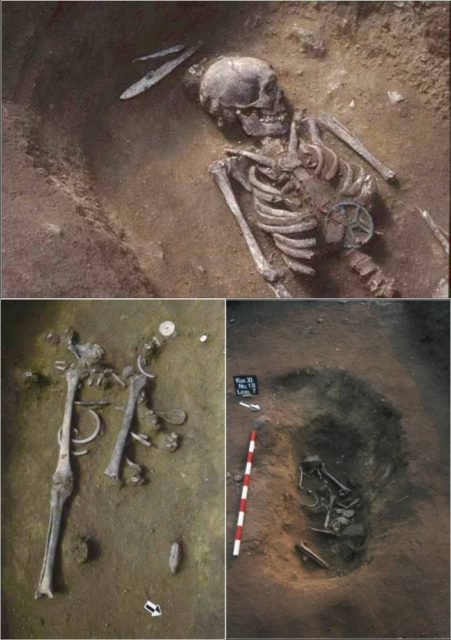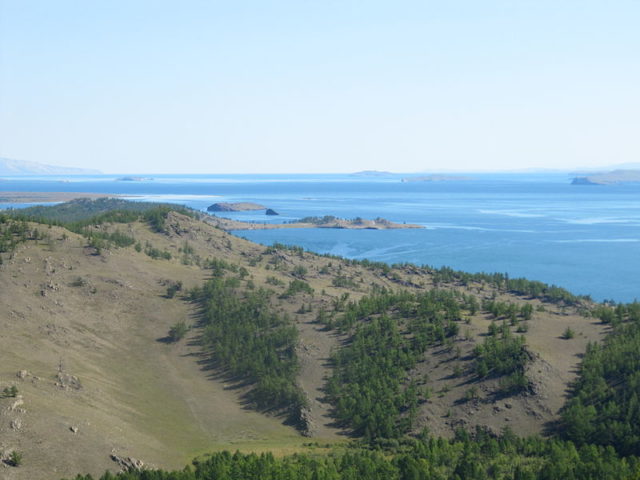At a site near Lake Baikal in Russia, experts have discovered an ancient couple, thought to be a man and either his wife or mistress, buried together in a display of eternal commitment and affection. The pair appear to be from the Bronze Age Glazkov culture, and the burial has some very unique traits.
Placed over one of the man’s eye sockets was a rare, white jade ring, and there were three more resting on his chest. Archeologist Dr. Dmitry Kichigin said, “It was probably somehow connected with their ideas about the afterlife.” A pouch was found between the man’s kneecaps, but its contents have not yet been revealed to the public.
The couple were estimated to be about 4,500 – 5000 years old by the team working on the site, but samples have been sent to Canada for more accurate carbon dating.

“In the grave we found male and female skeletons, lying on their backs, heads to the west, hand in hand,” Kichigin said. The oldest and deepest lake in the world, Lake Baikal, has been a sacred burial place since the Neolithic times.
The man’s skeleton was found complete, but the woman’s had been damaged by rodents. Near the woman, they found a large knife made of jade. It was 13 centimeters long and 7 centimeters wide. Around the man’s skull and his feet, they found pendants made of red deer and musk deer teeth. More than likely, they had decorated the man’s hat and footwear.
The couple’s relationship to each other is uncertain; archaeologist would like to conduct DNA tests to find out if they were related, but it appears that might not happen since it is too expensive.
The burial site is located at a cape on Maloe More, the strait that separates the mainland and the Olkhon Island, which is close to Chernorud, some 260 kilometers east of Irkutsk.

For now, the exact location of the site is being kept a secret so that amateur diggers don’t wreck an important location that may contain more, potentially even older, burials.
“We were lucky to find at least one skeleton in excellent condition, with implements and decorations – it is the dream of many archaeologists,” said Kichigin. “It would be very interesting to find out what the massive jade knife, which we found near the woman, was used for.”
“The cape, where we conducted excavations, was obviously a sacred place for ancient people,” he said. It was not a settlement but used for religious rites and as a graveyard from ancient times. We can expect a lot of interesting discoveries on this archaeological site, so we plan to continue our work next year.”
The team of archaeologists was led by Dr. Kichigin who is from Irkutsk National Research Technical University, and with the help of Yuliana Yemelyanova, from the Laboratory of Archeology, Paleoecology, and Life Support Systems of the Peoples of North Asia.
